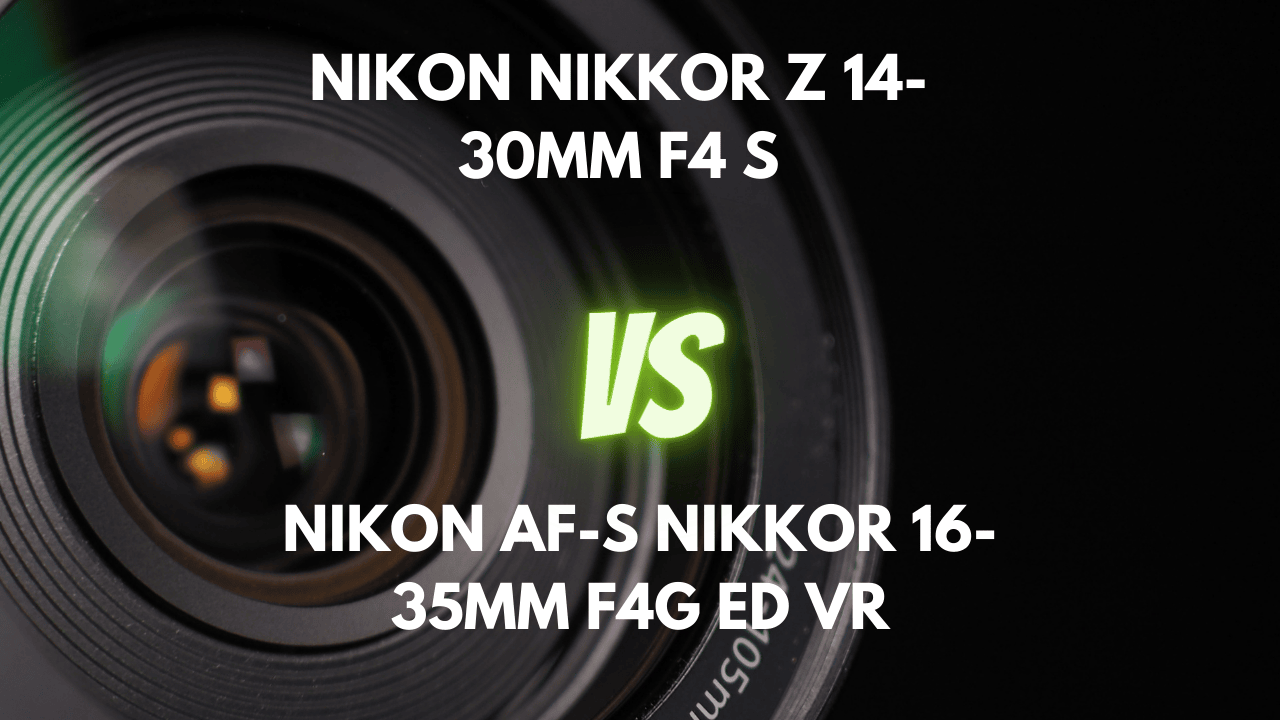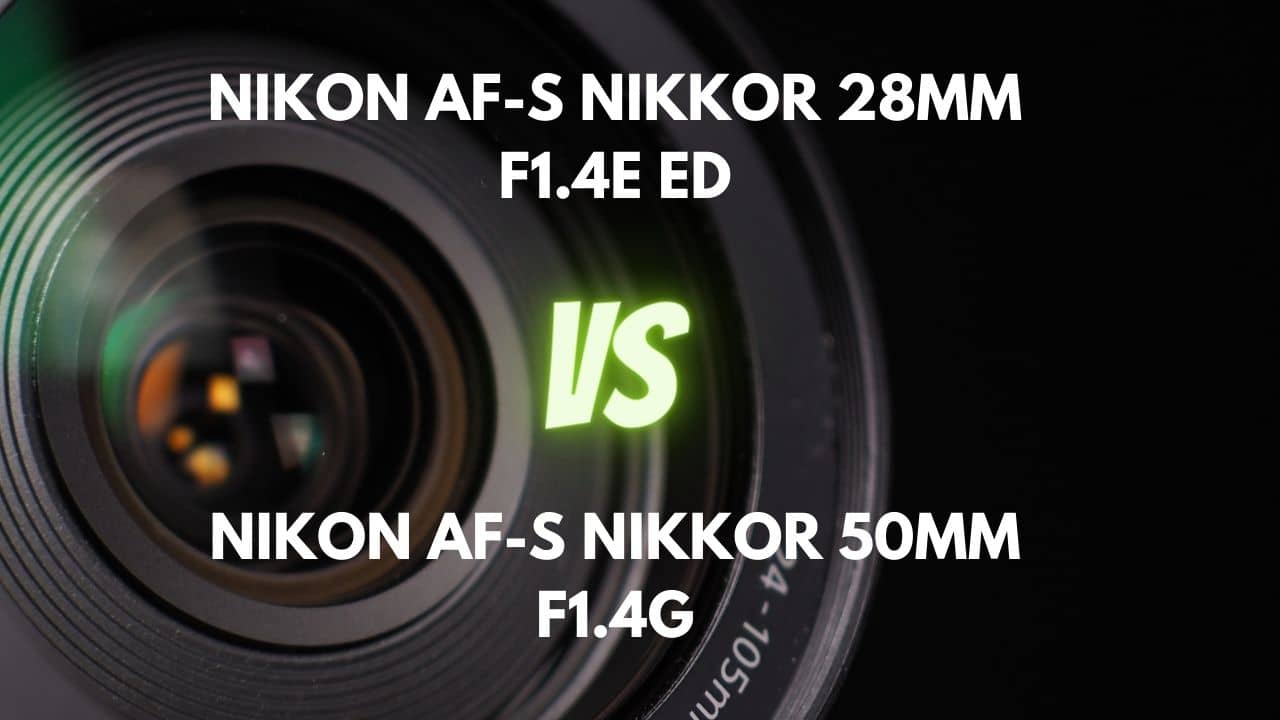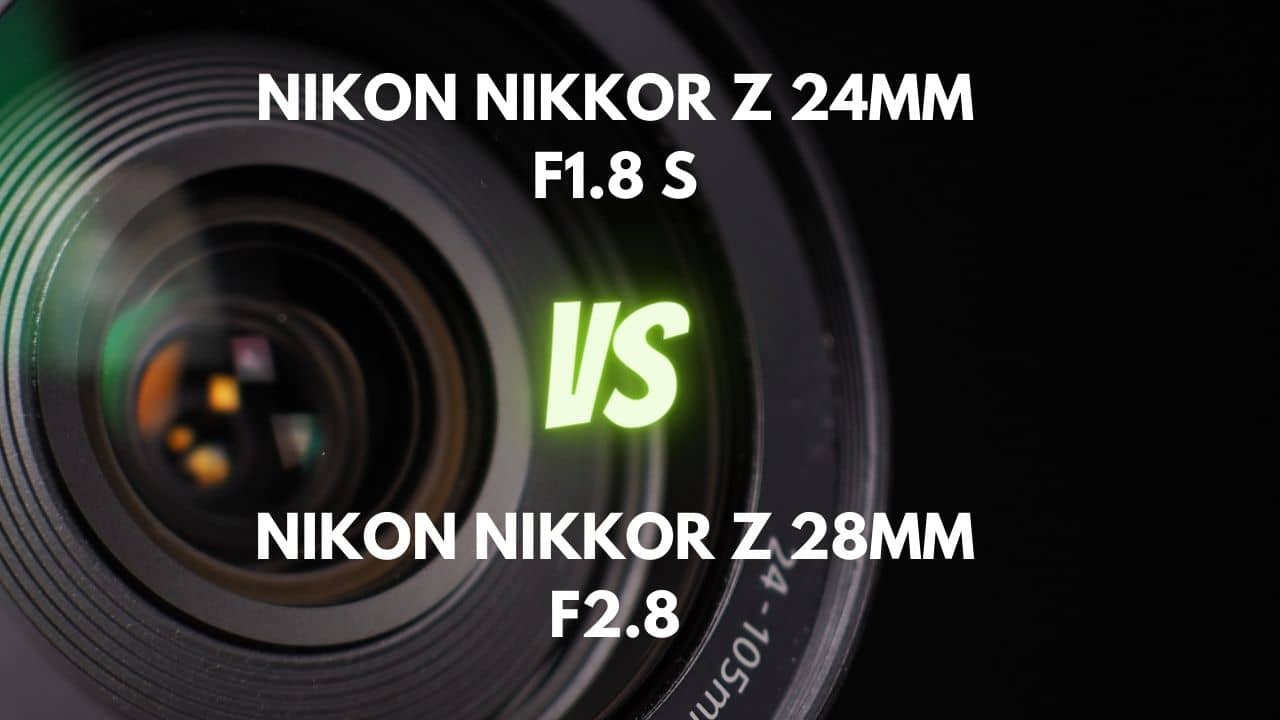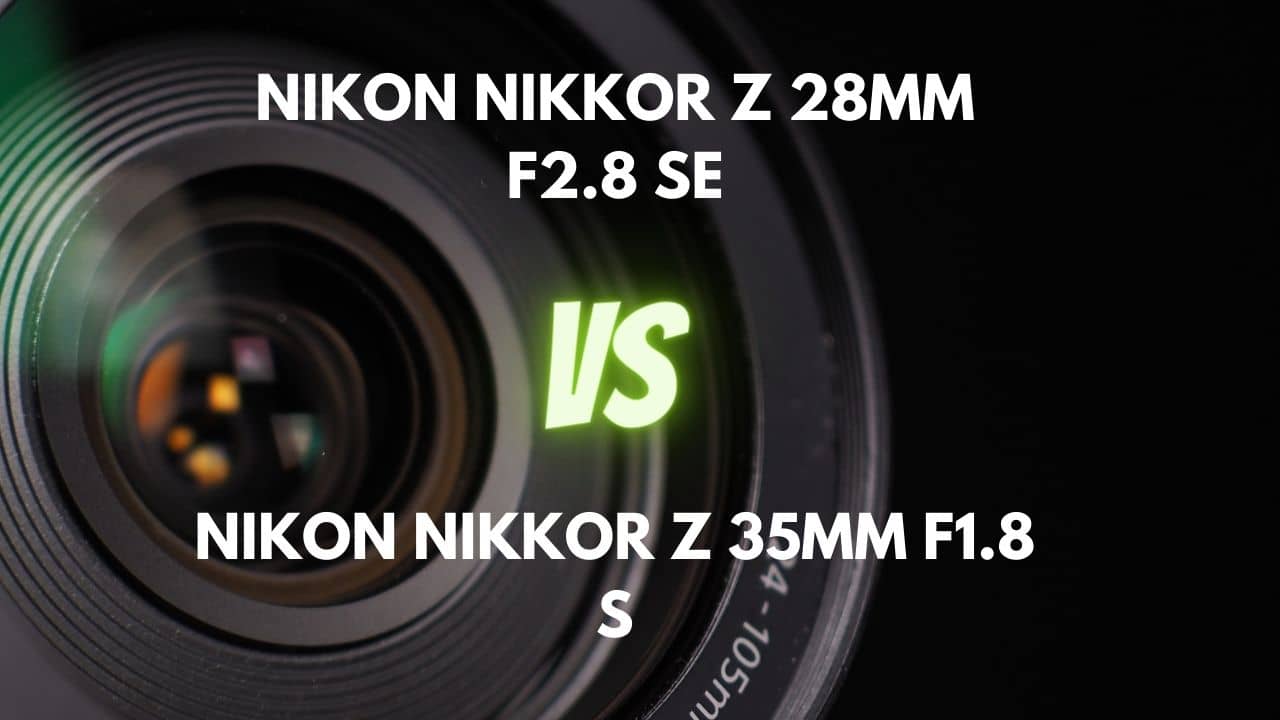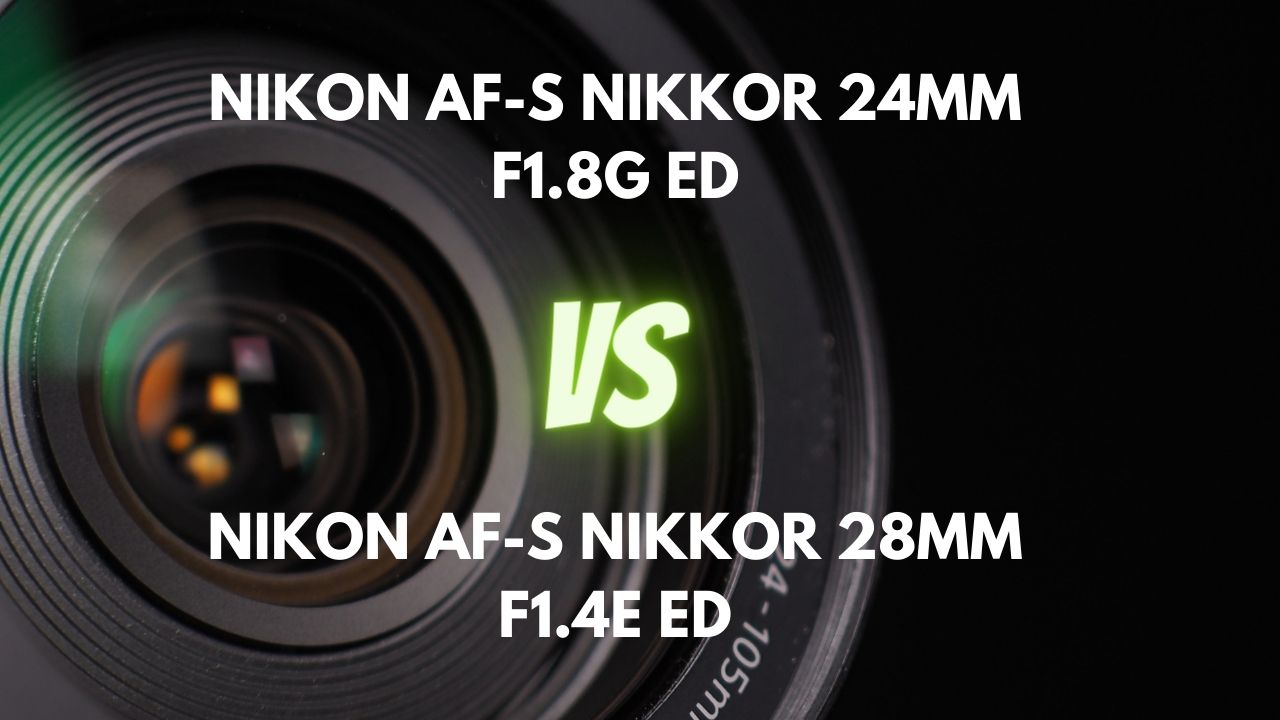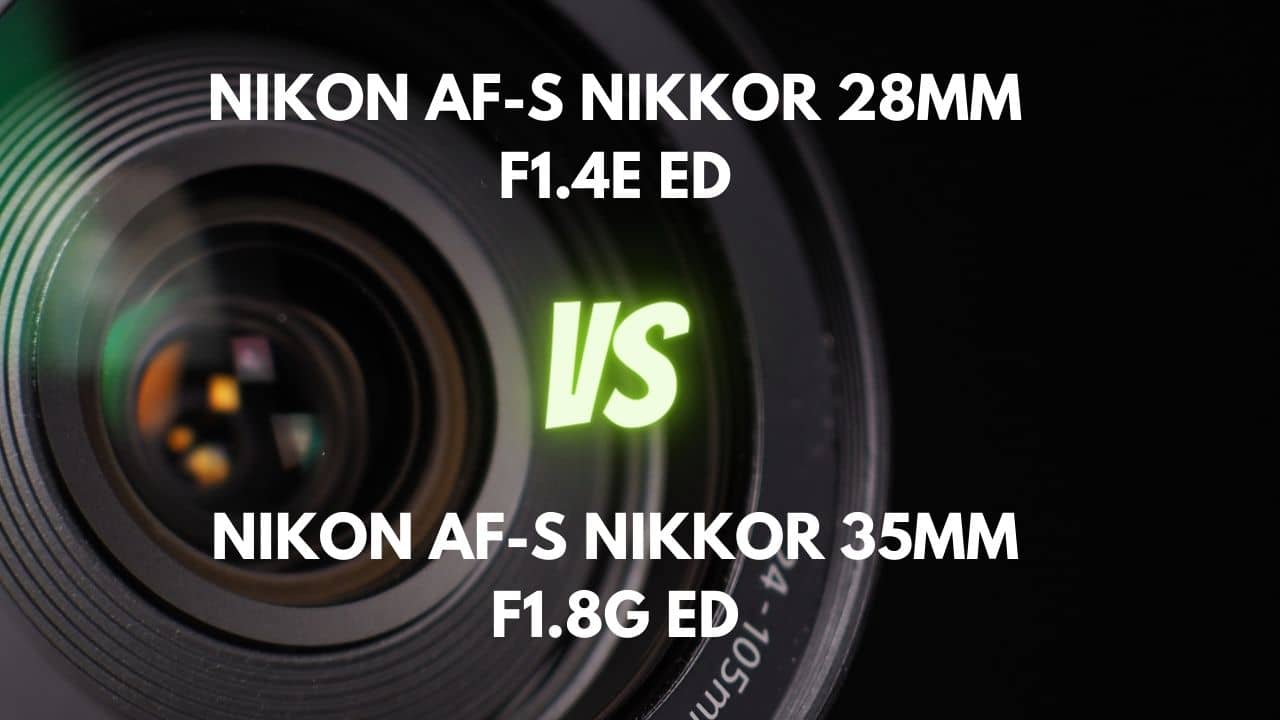Capturing breathtaking landscapes, stunning architectural marvels, or intricate interior spaces requires a high-quality wide-angle lens that brings out the best in every frame.
In the world of wide-angle photography, Nikon Z 17-28mm f/4 and Nikon Z 14-30mm f/2.8 have garnered significant attention for their impressive performance and unique features.
This article aims to provide an in-depth comparison of these two lenses, diving into the intricacies of their design, optical performance, and handling, to help you make an informed decision when selecting the perfect lens for your photography needs.
Whether you’re an avid landscape photographer seeking to capture vast panoramas, an architectural photographer striving for the perfect symmetry, or a creative artist looking to add a unique touch to your environmental portraits, understanding the strengths and weaknesses of these lenses is crucial.
Join us as we explore their performance in various aspects of wide-angle photography, such as sharpness, bokeh, distortion control, and more, helping you unlock your full potential as a visual storyteller.
By delving into this comprehensive comparison, you’ll gain valuable insights into which lens suits your style and requirements, ensuring that you’re well-equipped to create striking images that captivate your audience and stand out in a sea of wide-angle shots.
So, without further ado, let’s embark on this exciting journey to find the ultimate wide-angle lens that brings your vision to life.
Overview
| Nikon NIKKOR Z 17-28mm F2.8 | Nikon NIKKOR Z 14-30mm F4 S | |
|---|---|---|
| Max Aperture | F2.8 | F4 |
| Aperture Type | Fixed | Fixed |
| Focal Range (mm) | 17-28 | 14-30 |
| Max Format | 35mm FF | 35mm FF |
| Zoom Ratio (X) | 1.6 | 2.1 |
Comparing the Nikon Z 17-28mm f/4 and the Nikon Z 14-30mm f/2.8, both have fixed apertures, which means they maintain the same maximum aperture throughout their entire zoom range.
The 17-28mm lens has a larger maximum aperture of f/2.8 compared to the 14-30mm lens with f/4. A larger aperture allows more light to enter the camera, which can be beneficial in low light conditions. However, for wide-angle photography, a larger aperture is not always necessary, as landscape and architectural photography often require a deeper depth of field to keep the entire scene in focus.
The 17-28mm lens has a shorter focal range, from 17mm to 28mm, while the 14-30mm lens covers a slightly broader range, from 14mm to 30mm. The 14-30mm lens, with a 2.1x zoom ratio, offers more versatility in composition compared to the 1.6x zoom ratio of the 17-28mm lens.
Both lenses are designed for 35mm full-frame cameras, which means they can be used with high-resolution sensors to capture more details. Lenses with larger apertures often have better overall image quality, but wide-angle lenses can still deliver excellent results, even with smaller apertures, depending on the lens design and build quality.
In summary, the 17-28mm lens has a larger maximum aperture, which can be advantageous in low light situations, but may not be as crucial for wide-angle photography. The 14-30mm lens, on the other hand, offers a broader focal range and greater versatility in composition.
Design and Ease of Use
| Nikon NIKKOR Z 17-28mm F2.8 | Nikon NIKKOR Z 14-30mm F4 S | |
|---|---|---|
| Diameter x Length (mm) | ⌀75×101mm | ⌀89×85mm |
| Weight (gr) | 450 | 485 |
| Filter Thread (mm) | 67 | 82 |
| Weather Sealing | Yes | Yes |
| Zoom Method | Rotary (internal) | Rotary (extending) |
| Distance Scale | No | No |
| DoF Scale | No | No |
| Hood Supplied | Yes | Yes |
| Hood Code | HB-107 | HB-86 |
Comparing the Nikon Z 17-28mm f/4 and Nikon Z 14-30mm f/2.8, the dimensions and weight of these lenses can impact their portability, balance, discreetness, storage, and ease of lens swapping.
The 14-30mm lens has a diameter of 89mm and a length of 85mm, while the 17-28mm lens is slightly more compact with a diameter of 75mm and a length of 101mm. The 14-30mm lens weighs 485 grams, whereas the 17-28mm lens is lighter at 450 grams. The lighter and more compact 17-28mm lens might be more convenient for photographers who prioritize portability and ease of handling.
The zoom method also differs between the two lenses. The 14-30mm lens uses an extending rotary zoom method, which means that the lens physically extends when zooming in or out. This can make it more cumbersome to handle and may make it more challenging to achieve effective weather sealing.
On the other hand, the 17-28mm lens uses an internal rotary zoom method, which keeps the lens at a constant length while zooming. This can make it easier to handle and provide better weather sealing, but may result in a more complex design.
Lens Mount and Barrel
The Nikon Z 14-30mm f/2.8 features a metal lens mount with a weather sealing gasket around the edge. In contrast, the Nikon Z 17-28mm f/4 has a metal lens mount without a rubber gasket. A weather sealing gasket provides added protection against dust, moisture, and other elements, making the 14-30mm lens mount superior in this regard.
The lens barrel of the 14-30mm lens is made of a mix of plastic and metal, including chromed metal parts, and has a collapsible design that helps keep its size down. On the other hand, the 17-28mm lens barrel is primarily made of plastic, with a beveled design for comfortable handling and a ridged, rubberized zoom grip.
Plastic lens barrels are generally lighter and more budget-friendly but may not be as durable as metal barrels. Metal lens barrels are sturdier and have a more professional feel but can be heavier and less portable. The 17-28mm lens, with its mostly plastic barrel and internal zooming mechanism, might be more convenient for photographers prioritizing portability and ease of handling.
In conclusion, the 14-30mm lens mount and barrel are superior in terms of weather sealing and durability, while the 17-28mm lens offers greater portability and ease of handling.
Weather Sealing
The Nikon Z 17-28mm f/4 has a hydrophobic fluorine coating on the front element that is highly resistant to fingerprints and debris. It offers sealing against dust and water droplets, providing some protection against inclement weather conditions.
However, it is not guaranteed to be water-resistant under all circumstances, and caution should be exercised in windy or dusty environments. The lens is not fully weatherproof, but it does benefit from a moisture-resistant construction that helps prevent moisture from penetrating the lens.
In contrast, the Nikon Z 14-30mm f/2.8 is fully weather-sealed, featuring a rubber grommet at the lens mount and further special weather sealing throughout the construction, including at the rings, switches, and the front of the barrel. It also has a fluorine coating on the front element to repel dust and make it easier to clean. These features make the lens perfect for landscape shooting and professional use.
In conclusion, the 14-30mm lens offers superior weather sealing, providing better protection against dust, moisture, and light water splashes. This makes it more suitable for outdoor photography in various conditions and for photographers who often shoot in harsh environments. The 17-28mm lens provides some level of protection but is not fully weatherproof, making it more suitable for those who primarily shoot in controlled settings or do not require extensive weather sealing.
Rings
The Nikon Z 17-28mm f/4 has a wider zoom ring and a narrower focus/control ring. The zoom ring is accurately marked at 17mm, 20mm, 24mm, and 28mm, and takes just under a quarter turn to zoom from 17mm to 28mm. The zoom and focusing mechanisms work internally, ensuring that the lens doesn’t change length during use.
The focus/control ring is customizable to one of four different settings, offering a smooth tactile experience with just enough resistance for precise adjustments. However, it lacks hard stops at either end and has no physical end points to its rotation. There is no windowed distance scale or depth-of-field indicator on the lens barrel.
On the other hand, the Nikon Z 14-30mm f/2.8 features a larger zoom ring and a smaller focus ring. The zoom ring has markings at 14, 16, 20, 24, and 30 mm, and requires less than a quarter of a turn to zoom in and out. The focus ring can be programmed for various functions and is smooth to rotate, enabling easy manual focusing with just a fingertip. However, it lacks inscriptions or tactile bevels, and there are no windowed distance scales or depth-of-field indicators on the focus ring.
In conclusion, the 17-28mm lens offers a better ring design with a more intuitive and customizable focus/control ring, providing a smoother tactile experience and finer control over manual focusing. The 14-30mm lens offers a versatile focus ring with programmable functions but lacks the tactile feedback and customization options found in the 17-28mm lens.
Switches/Buttons
The Nikon Z 17-28mm f/4 and 14-30mm camera lenses differ in their approaches to switches and buttons.
For the 17-28mm lens, there are no dedicated switches or buttons on the lens barrel, such as an AF/MF switch or an IS switch. Instead, users need to access the camera menu or use the focus ring to switch between autofocus and manual focus.
The control ring on the lens can be programmed via the camera menu to alter aperture, exposure compensation, ISO, or to have no function at all. This streamlined design ensures straightforward handling, with everything working smoothly and as expected.
In contrast, the Nikon Z 14-30mm f/2.8 has an AF/MF switch located at the base, allowing for easy switching between autofocus and manual focus. This dedicated switch makes it more convenient to change focus modes without accessing the camera menu. However, unlike the 17-28mm lens, the 14-30mm lens doesn’t offer the customizable control ring feature.
In conclusion, the 17-28mm lens has a more minimalistic design, relying on the camera menu and control ring for adjustments. This simplicity may appeal to photographers who prefer a clean, uncluttered lens barrel. On the other hand, the 14-30mm lens offers the convenience of an AF/MF switch for quick focus mode changes.
The choice between these lenses will depend on individual preferences for convenience and customization. If you value an accessible AF/MF switch and don’t require a programmable control ring, the 14-30mm lens may be the better choice. However, if you appreciate the streamlined design and customization offered by the 17-28mm lens, it may be the superior option.
Filter Thread
The Nikon Z 17-28mm f/4 and 14-30mm camera lenses exhibit differences in their filter thread designs.
The 17-28mm lens features a 67mm plastic filter thread, with the front element remaining stationary during focusing. This design makes it convenient to use polarizing or graduated filters. Additionally, the lens is compatible with the same filter thread size as the Nikon Z 28-75mm f/2.8 lens, allowing for easy filter interchangeability between the two lenses.
In contrast, the Nikon Z 14-30mm f/2.8 has a non-rotating 82mm filter thread, which is surrounded by an inscription displaying the lens name and parameters. This lens is highly compatible with various filters, such as polarizers and ND filters, making it an excellent option for landscape photography.
The lens can easily attach filters without needing a specialized filter holder, which appeals to travelers. The Hoya multicoated HD3 UV filter is recommended as the best protective filter due to its durability and ability to repel dirt and fingerprints.
In conclusion, the choice between the 17-28mm and 14-30mm lenses in terms of filter thread superiority depends on your priorities and preferences. If you value a lightweight design and compatibility with other Nikon lenses, the 17-28mm lens with its 67mm plastic filter thread is a suitable choice. However, if you’re seeking a larger filter thread size that offers more versatility and easy compatibility with various filters, the 14-30mm lens with its 82mm filter thread may be the superior option.
Lens Hood
The Nikon Z 17-28mm f/4 and Nikon Z 14-30mm f/2.8 both come with petal-shaped lens hoods, but with slightly different designs and materials. The 17-28mm lens hood is a bayonet type made of high-quality polycarbonate. It clicks cleanly into place and stays securely attached during normal use. The hood can be smoothly rotated, featuring an ergonomic bevel for improved handling.
On the other hand, the 14-30mm lens hood, HB-86, is also made of plastic, offering a secure click when attached. This petal-shaped lens hood provides adequate protection for the lens while remaining easy to use.
In summary, both lens hoods provide protection and convenience for their respective lenses. The 17-28mm lens hood, with its high-quality polycarbonate construction and ergonomic bevel, might be considered superior in terms of durability and handling. However, the 14-30mm lens hood also provides a secure and functional option for photographers.
Focusing and Optical Stabilization
| Nikon NIKKOR Z 17-28mm F2.8 | Nikon NIKKOR Z 14-30mm F4 S | |
|---|---|---|
| Autofocus | Yes | Yes |
| AF Motor | Stepper motor | Stepper motor |
| Rotating Front Element | Does not rotate on focusing | Does not rotate on focusing |
| Min Focus Distance | 0.19m(17-19mm);0.23m(20-23mm);0.26m(24-28mm) | 0.28m |
| Max Magnification (X) | 0.19 | 0.16 |
| Full-Time Manual Focus | Yes | Yes |
| Focus Method | Internal | Internal |
Focusing Performance
The Nikon Z 17-28mm f/4 boasts a virtually silent stepping motor, providing fast and accurate focusing with minimal focus breathing. Its internally focusing design ensures the lens’s length remains constant regardless of focus and zoom settings. With smooth manual focus action and a quick initial autofocus acquisition speed, the 17-28mm lens performs well in low-light situations.
On the other hand, the Nikon Z 14-30mm f/2.8 has an equally impressive autofocus system that is both quick and quiet. It takes around 0.2 seconds to focus from infinity to 0.26m and 0.3 seconds for autofocus acquisition. The lens also features manual focus override and electronic manual focus action. Despite a slight delay in responsiveness when manually focusing, the 14-30mm lens performs admirably in low-light conditions.
In conclusion, both lenses offer strong focusing performance, making them suitable for various photography styles and situations. The 17-28mm lens stands out for its minimal focus breathing and internally focusing design, while the 14-30mm lens impresses with its fast focusing speed and quiet operation.
Optical Stabilization
The Nikon Z 17-28mm f/4 does not have optical image stabilization (OIS, IS, or VR). While it lacks the full 5-stop IBIS performance found in some Nikon lenses, it’s still possible to shoot handheld photos for half a second if propping elbows on something. On the other hand, the Nikon Z 14-30mm f/2.8 also lacks optical stabilization. However, Nikon Z bodies offer built-in 5-axis sensor-shift stabilization and an optional electronic stabilization option in video mode..
Given that optical stabilization is less critical for wide-angle lenses, neither the 17-28mm nor the 14-30mm lens has a clear advantage in this regard. However, when used with a Nikon Z body, they still offer stabilization options due to the built-in sensor-shift stabilization and the optional electronic stabilization in video mode. However, for general wide-angle photography, the difference in stabilization performance between the two lenses might not be significant enough to sway your decision.
Image Quality
| Nikon NIKKOR Z 17-28mm F2.8 | Nikon NIKKOR Z 14-30mm F4 S | |
|---|---|---|
| Special Elements | Three aspherical elements, two extra-low dispersion (ED) elements and one Super ED element | 4 ED and 4 aspherical elements + Nano Crystal Coat |
| Diaphragm Blades | 9 | 7 |
Aberration
The Nikon Z 17-28mm f/4 exhibits some chromatic aberration, especially at the wide end of the focal length range, but it is well-controlled and nearly negligible at 28mm. Stopping down the aperture slightly can improve chromatic aberration performance, but it is hardly noticeable in real-world images, even with correction turned off.
The lens has almost no coma, making it a good candidate for star photography. Spherical aberration, which can cause colored fringes on out-of-focus highlights, is present but diminishes when stopped down.
On the other hand, the Nikon Z 14-30mm f/2.8 offers strong chromatic aberration correction due to its 4 ED glass elements. Longitudinal chromatic aberration is negligible in out-of-focus areas, but lateral chromatic aberration is present and more noticeable at the edges of the frame, particularly at 14mm focal length and wider apertures.
Spherochromatism is minimal, while spherical aberration is noticeable at the maximum focal length and in certain situations but is usually difficult to detect. Coma, haloing, and color aberrations can be revealed in night shots but are not significant weaknesses of the lens.
In conclusion, both lenses perform relatively well in terms of aberration control. The 17-28mm lens has a slight edge for star photography due to its minimal coma, while the 14-30mm lens offers strong chromatic aberration correction with its ED glass elements.
Sharpness
The Nikon Z 17-28mm f/4 delivers impressive sharpness, with the central region of the image frame being spectacular throughout the entire zoom range. The sharpness extends to the edges and corners of the frame, particularly in the shorter half of the zoom range.
However, performance at 28mm is weaker at f/2.8, particularly in the corners, but improves significantly as you stop down. The sharpest aperture varies by focal length, with f/5.6-f/11 being the best for edge sharpness, and center sharpness outstanding between f/2.8 and f/11 at all focal lengths.
In contrast, the Nikon Z 14-30mm f/2.8 offers excellent overall sharpness at all focal lengths. The best apertures for center sharpness are f/4 and f/5.6, while corners are sharpest at f/5.6 and f/8. Sharpness drops slightly at f/11 and again at f/16 but remains good throughout the aperture range, only becoming problematic when closely examining the image at 100%.
The edge of the frame shows the best sharpness between f/5.6 and f/11. Corner sharpness is weakest at 14mm wide open, but improves noticeably when zooming in, even to 16mm. However, the lens lacks strong detail in the corners even when stopped down and never quite reaches the sharpness performance of Nikon’s 14-24mm f/2.8 lens.
In conclusion, both lenses perform admirably in terms of sharpness. The 17-28mm lens provides more consistent sharpness across the frame, particularly at shorter focal lengths, while the 14-30mm lens offers excellent sharpness but struggles slightly in the corners at wider focal lengths.
Bokeh Quality
The Nikon Z 17-28mm f/4 produces a somewhat busy bokeh with noticeable bright edges and onion rings inside. Despite this, the lens utilizes an iris diaphragm with 9 rounded blades that generally succeeds in creating a nicely rounded bokeh, with only a slightly rounded cat-eye effect towards the edge.
Although bokeh is not this lens’s strong point, it is reasonably good, and backgrounds do not typically distract from the subject. When stopped down to moderate and small apertures, the lens can produce great 18-pointed sunstars on brilliant points of light. Overall, the bokeh quality of the 17-28mm lens is decent, with some minor flaws but still capable of delivering pleasing results.
On the other hand, the Nikon Z 14-30mm f/2.8 can create attractive shallow depth of field effects, with out-of-focus areas rendered smoothly and a pleasing natural drop-off at f/4. However, due to its slow and wide nature, it is challenging to achieve out-of-focus areas with this lens. Additionally, significant background separation is lacking unless zoomed in and shooting at f/4. In general, the bokeh quality is not a strong point of the 14-30mm lens.
In conclusion, while bokeh quality is not typically a primary concern for wide-angle lenses, both lenses offer some degree of bokeh quality. The 17-28mm lens delivers a more pleasing bokeh with some minor flaws, whereas the 14-30mm lens struggles to achieve out-of-focus areas and background separation. Based on bokeh quality, the 17-28mm lens is the superior choice for those seeking to add a creative touch to their wide-angle photography, such as environmental portraits or close-up shots.
Flare/Ghosting
The Nikon Z 17-28mm f/4 handles flare effectively, with in-frame light sources producing minimal ghosting artifacts and no Christmas Tree color commonly seen in some wide-angle lenses. Veiling glare is also well-controlled.
However, the lens lacks Nikon’s special anti-reflective coatings to reduce ghosting and lens flare, which means that shooting directly into the sun or other light sources can produce some small flare dots. Using the lens hood consistently can help minimize this issue. Overall, the flare and ghosting performance of the 17-28mm lens is good, with fewer distracting ghosts and discolorations than most ultra-wide lenses.
In comparison, the Nikon Z 14-30mm f/2.8 performs exceptionally well against strong light sources, producing minimal flare and ghosting artifacts at both the short and long ends of the zoom range. This lens demonstrates remarkable resistance to flare and ghosting, ensuring that your images remain clear and crisp even in challenging lighting conditions.
In conclusion, both lenses show commendable flare and ghosting resistance. However, the 14-30mm lens outperforms the 17-28mm lens in this aspect, thanks to its exceptional ability to handle strong light sources across the entire zoom range.
Vignetting
The Nikon Z 17-28mm f/4 exhibits noticeable vignetting when shooting wide open at f/2.8 throughout the zoom range. While this vignetting can be corrected in post-processing or in-camera, correcting it in post-processing can lead to exaggerated noise levels in the corners of your photos.
Turning on in-camera corrections is recommended to minimize post-production work, but even with these corrections, you may still experience about a stop of vignetting. Despite its presence, vignetting in the 17-28mm lens can be managed using the right settings and correction methods.
On the other hand, the Nikon Z 14-30mm f/2.8 also displays some vignetting, particularly at the 14mm focal length and wide open aperture. However, stopping down to f/5.6 or f/8 can reduce this effect, and it almost disappears at the 16mm focal length.
In-camera corrections should be turned on for better results, and using certain filter systems can help reduce or eliminate the vignetting issue. Post-processing software can also be used for correcting this lens’s vignetting.
In conclusion, both lenses exhibit vignetting, with the 17-28mm lens showing more pronounced vignetting at f/2.8 across the zoom range. However, the 14-30mm lens seems to have better control over vignetting, especially when stopping down or using in-camera corrections and filter systems.
Distortion
The Nikon Z 17-28mm f/4 exhibits minimal distortion throughout its zoom range. It has minor barrel distortion at the shortest 17mm focal length, slight pincushion distortion at 20mm, and moderate pincushion distortion from 24mm to 28mm. In-camera corrections do a good job of removing the distortion, and for many focal lengths, the base level is low enough that you might not even need to worry about it.
The lens performs impressively in terms of distortion control, making it a solid choice for landscape and architecture photography. However, there is noticeable barrel distortion at the 17mm end and vignetting at f/2.8, which can be easily corrected in-camera or during post-processing.
On the other hand, the Nikon Z 14-30mm f/2.8 experiences significant distortion, especially at 14mm, where there’s almost 8% barrel distortion. This distortion is noticeable across the entire zoom range. Lens profile corrections built into software like Adobe Lightroom and Nikon Capture NX-D can help mitigate this distortion, but it remains present.
However, the lens handles pincushion and barrel distortion at the edges of the frame quite well, with vertical lines remaining straight without the typical curvature, which is a positive aspect.
In conclusion, the 17-28mm lens outperforms the 14-30mm lens in terms of distortion control, with minimal distortion throughout its focal lengths. While the 14-30mm lens can manage distortion at the edges of the frame, it suffers from significant distortion, particularly at the 14mm focal length.
Final Verdict
Based on the comparisons made, the choice between the Nikon Z 17-28mm f/4 and Nikon Z 14-30mm f/2.8 depends on your priorities and needs in wide-angle photography.
The 17-28mm lens offers a larger maximum aperture, better portability, ease of handling, minimal focus breathing, impressive sharpness, pleasing bokeh, and superior distortion control. It would be an excellent choice for photographers who prioritize consistent performance, lightweight design, and minimal distortion, particularly in landscape and architecture photography.
The 14-30mm lens provides a broader focal range for greater versatility, better weather sealing, fast and quiet focusing performance, strong chromatic aberration correction, and exceptional flare and ghosting resistance.
It also has better control over vignetting when stopping down or using in-camera corrections and filter systems. This lens would be ideal for photographers who require a more versatile wide-angle lens, often shoot in harsh environments, and value a lens that can handle strong light sources effectively.
Ultimately, your decision should be based on your specific photography requirements and preferences, taking into account the strengths and weaknesses of each lens in various aspects of wide-angle photography.

